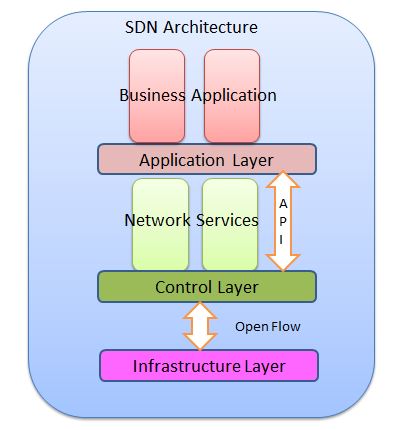SDN and NFV | SDN and NFV role in 5G | SDN Architecture | Benefits of SDN and NFV | What is SDN and NFV in Telecom?
SDN and NFV
Advantages of SDN architecture:
- SDN architecture is very dynamic and agile.
- SDN architecture is easy to manage centrally.
- SDN architecture is cost-effective.
- SDN architecture is very adaptable.
- SDN architecture is very much programmable because of decoupling network control plane and forwarding plane.
- SDN architecture is open standard and vendor independent.
- Standard protocol open flow is used between control plane and forwarding plane.
NFV (Network Function Virtualization):
Network function virtualization is a concept of virtualizing network function. Normally we have seen each network function like load balancer, firewall etc. are based on appliance and these are supplied by specific vendors. Since network function software’s and hardware’s are provided by individual vendor and it is tightly coupled, proprietary.
Benefits of NFV:
- Independent of hardware supplied by vendor. It runs on standard x86 based servers.
- Reduced CAPEX and OPEX.
- NFV enabled optimize use of hardware resources.
- NFV enabled automation and orchestration.
- It provides scalability and flexibility.
Why do we need SDN and NFV?
We have seen that server virtualization is happening since long time back for IT workloads in data centre. Virtualization enable quick deployment of application, ease to manage and auto scale as per requirement and mobility. Network has become a bottleneck to achieve this kind of flexibility.
If we wanted to utilize all the advantages of virtualization we have virtualize network as well where automatic network provisioning has to be done along with VNF provisioning.
For this reason now a days data centre networking are being re-designed with SDN enabled switches. There many vendors that provide SDN based solution for data centre like Cisco ACI, VMware NSX, and Nokia Nuage etc.
Service provider adoption status of SDN and NFV:
SDN and NFV were very popular and trendy in service provider as well along with enterprise and cloud providers. It has been observed NFV creates some performance bottleneck for the applications which are very CPU intensive and require high throughput. There are many approaches to improve the performance of VNF like PCI-PT, SR-IOV and DPDK. Each technology is having some limitation. Service providers were very slow for adapting SDN and NFV technologies.
SDN and NFV role in 5G:
In 5G era there is a requirement of mobile edge computing and network slicing. SDN and NFV are getting more focus in service provider’s domain again. There are many option are being explored to mitigate the performance and limitation of NFV approaches. SmartNIC solution is one of the best solutions that are being explored now days.
SDN Architecture

According to open networking org., SDN architecture can be defined as below
DIRECTLY PROGRAMMABLE
Network control function is decoupled from forwarding function. So, network control is now flexible to program directly as per requirements.
AGILE
Administrator is having more control on adjusting network traffic flow whenever required due the abstraction of control plane and forwarding plane.
CENTRALLY MANAGED
The whole network is managed from centralised location using software-based SDN controllers. The centralised controller is having holistic visibility and control of entire network. Entire network looks like a single fabric.
PROGRAMMATICALLY CONFIGURED
SDN allows network managers to configure, manage, secure, and optimize network resources very quickly via dynamic, automated SDN programs, which they can write themselves because the programs do not depend on proprietary software.
OPEN STANDARDS-BASED AND VENDOR-NEUTRAL
SDN enable simplification on design and operation by using SDN controllers. SDN controllers interact with network elements via standard protocol. Every vendor has to follow standard protocol to communicate with SDN controllers. This will eliminate vendor lock in and create vendor neutral eco system.